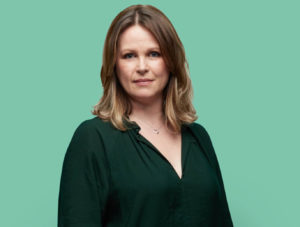What does great B2B PR look like and how does it differ from B2C?
Whether you’re looking at B2B or B2C, it’s all about having the end in mind. What are the commercial objectives and how is the success of this project going to be judged?
There is a prevailing sense that B2B has to be serious, detailed and conservative, and of course there can be a place for all those things, but in my experience the best B2B campaigns have more of a consumer feel about them. In fact, I think the very term “B2B” is unhelpful. It’s more like “P2P” – “Person To Person”. You need to keep reminding yourself that you are selling to an individual.
All our clients at Definition are committed to improving the world in many ways – whether it’s job and wealth creation, tech innovation, pioneering research or ideas the world needs to know about. They are doing exciting things and we need to mirror that in what we say and how we say it. We’ve won over 60 awards for our work and one of the common themes is that they all used consumer principles to stand out in crowded or otherwise unimaginative marketplaces.
The best B2B campaigns have more of a consumer feel about them
What about if the B2B brand in question is recognised for its conservatism and tradition? Would these methods still be appropriate?
It’s of course important to stay true to who you are – what does your brand stand for and to who? There’s no point going out to market with an all singing, all dancing instagram campaign if your audience isn’t tech savvy or your brand visually engaging, for example.
That said, it still isn’t an excuse for lacking imagination. Nobody wants to be talked to like they’re void of personality or emotion.
How has digital impacted B2B PR in recent years?
It’s had a huge impact.
If you looked at how our industry worked even 6 or 7 years ago, it was a case of coming up with a good news angle, selling it in to relevant journalists and hoping for the best. Now, with the insight and analytics offered by various digital tools, you can see what is actually engaging clients and their customers and what impact that’s having on the buying journey. From this position, you can then develop future stories you know are going to have the right commercial impact.
Digital has also made us far more accountable, and that’s a good thing. Not so long ago agencies would present a bunch of press clippings and expect that to justify their fee with the ‘thud factor’. Now we can track our impact in real time, not only at a brand level, but often in terms of leads generated. It makes it far easier to attach a value to our work.
And the trend is only moving in one direction. Stats that say by 2020 a third of the working population will be millennials, so, even in a B2B environment, if your PR activity isn’t built for the digital world then you’re going to have real issues.
Ultimately, however, the fundamentals of what makes a great PR campaign haven’t changed. It’s still about understanding the brand and building stories that cut through the noise to engage and influence an audience. The principles of strong storytelling still apply.
By 2020 a third of the working population will be millennials
Is there not a danger though that we can become too digital centric, and forget that many people, particularly senior decision makers, are still often best engaged in an offline environment?
Yes, absolutely. A few years ago there was a mass migration of traditional marketers and PR experts to digital agencies as these agencies could see the value of a strong PR offering, particularly from a search engine perspective. However, PR isn’t just something you can bolt on; it needs to sit centrally and drive conversation at a brand and strategic level. Consequently, many of these people ended up working in silos as glorified link builders, and struggled to tell the kind of stories they were used to, so within a couple of years there was an exodus back across to PR agencies with a more integrated proposition. We’ve benefitted from this.
It’s the job of a good PR agency to marry these different elements and ensure the stories they tell are distributed via the appropriate channels, whether that’s online or offline, earned or owned.
What role does influencer marketing now play in the B2B space?
Most people think that consumer markets have a monopoly on influencers. That’s nonsense. The truth is that influencers have always existed within the B2B space; you just need to know where to look. They could be speakers at large industry events, subject matter experts or senior individuals in large organisations. The common theme is that they should hold significant credibility, reach and influence among your audience, and be a good fit with your brand personality and values.
Influencers have always existed within the B2B space
What should a professional service organisation expect from their PR agency
First of all, they need to be sure that the agency has an understanding of the nuances of working within professional services. Do they understand how to navigate the complexities of a partnership structure, for example? The agency doesn’t need to be full of legal or accountancy experts – that’s the client’s territory – but they must understand the big issues impacting the market, and the political agenda. They also need to challenge the client to push the boundaries and shape the conversation, rather than be merely carried along with it. There’s no points in PR for ‘me too’.
While it’s important to recognise that the purpose of the PR function is not to fill the sales funnel, we are now frequently seeing our activities translate into direct leads and through digital analytics this is all easy to monitor. It’s therefore more important than ever that we are collaborating closely with the sales team to ensure our activities are aligned.
Above all, however, the firm should expect the agency to elevate their brand so that when someone representing that organisation walks into a room, people already know what you do, who you do it for and what you stand for.
What level of involvement should the leader of the firm have in the PR strategy?
We’re usually brought in for reputation management activities so that typically means having a direct line to the CEO. It’s absolutely critical to have the CEO’s buy-in to the strategy and sometimes they will actually be the face of the campaign.
This is so important from a brand perspective. Ultimately this is the person mapping and articulating the vision, so if that’s disconnected from the stories we are telling then whilst we might have some success at a tactical level, it’s not going to build the brand equity in the long term.
It’s absolutely critical to have the CEO’s buy-in to the strategy
What’s your favourite B2B PR campaign?
An example that we weren’t involved in but that I think really illustrates the power of adopting a B2C mindset is from Xero Accountancy Software.
They could have just churned out a bunch of white papers for small business owners, but instead they looked at what kept their customers awake at night – managing cashflow – and thought of how they could engage their audience in a really fun way. The campaign they created involved an edited version of the song Chasing Pavements by Adele, which they changed to “Chasing Payments”. They then had some of their customers make their own recordings which they shared with their debtors as a means of escalating outstanding invoices in a light hearted way.
Not only did this lead to a tonne of great user generated content for the brand, but also extended their reach as the customers were voluntarily sharing the recordings on social media. You can see the full details for that campaign here.
An example from our work would be with EY, who asked us to look at how they engage more effectively with high growth technology companies. Our concept was an “ideas sprint” – 1 day, 3 locations and 100 brains – combining large corporates with start ups, to see how AI could be used to overcome shared business challenges. From this, we created an instant magazine and pushed the content out across all channels. You can see the details here. The whole idea of transforming an ‘event’ into an ‘innovation sprint’ gave the whole concept excitement, pace and a sense of purpose, and it was hugely successful in engaging an entirely new audience.
A final example would be the work we’ve done recently with the amazing team at Manifesto on their Membership Economics campaign, for which we’ve just been shortlisted in the CIPR industry awards. Our primary goal was to position Manifesto as experts in membership economics whilst delivering tangible leads for the business. To do this we brought together Manifesto’s insights with heavyweight business research and interviews with global industry leaders – launching our report on ‘How to Make Money in the Membership Economy’ at an event at the h Club. Speakers included The Times, Revolut and Management Today. We drove attendees via highly targeted LinkedIn teasers and advertising, and the end result was far beyond the client’s expectations – 100 big brand execs attended, international media coverage was secured and, most importantly, over 30 new business meetings were generated. The session had a fantastic buzz you wouldn’t typically associate with a corporate event and is something we’re incredibly proud of.





